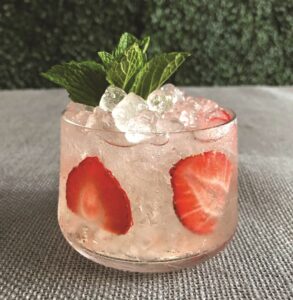If living in Louisiana has taught me one thing, it’s that when drinking during a global heat wave, it’s best to fill your glass with something low-proof. I found that rule worth following on this year’s pilgrimage to Provincetown, where more rainy days than usual put me barside more than beachside. When I want to dial back the booze in my cocktails, I go old school and pour vermouth.
This wasn’t always the case. My early drinking years at L.S.U. were full of cheap beer and margaritas made with sour mix from a soda gun. When I wanted to be fancy, I ordered cloyingly sweet amaretto sours.
Then, in 1991, I went to Siena, Italy for a year that improved both my Italian and my drinking habits.

I was living in the heart of Tuscany, and good wine was in abundance. I could even get wine at the university cafeteria, right along with my daily pasta. I was soon to learn what else they could do with those grapes. One day a classmate invited me over for drinks. I could just see the city’s main bell tower, the Torre del Mangia, from her apartment’s tiny balcony. She handed me a tumbler of what looked like red wine. I had to ask what it was. “Vermouth,” she replied.
I knew vermouth went in martinis, but I had not seen this red version before. I stole a glance at the bottle: Martini & Rossi. I knew the brand from a 1980s commercial for their Asti Spumante — “Celebrate Life!” But their vermouth? Not a clue. Still, it tasted good. It tasted … European. I sat back in my chair, soaking in the Italian sun, looking out on a medieval tower, and thought to myself, “Now, I am an adult.”
Vermouth’s origins date back to at least the 15th century, when botanicals like wormwood were added to wine for medicinal purposes (wormwood is an ingredient in absinthe). The word vermouth comes from a French pronunciation of the German wermut for wormwood. Not all vermouths contain wormwood, but the name stuck. Two vermouth styles emerged by the 19th century: sweet and dry. The sweet was usually red and from Italy, while the dry was white and French. I sipped the red — on the rocks with a lemon twist — for the rest of my year in Siena.
I regret to admit that upon returning to college I resumed my former ways, my vermouth with a twist forgotten. Then I saw the play Hedwig and the Angry Inch. Hedwig has left her life in East Berlin and through misfortune has ended up in small-town Kansas. While musing on her life, she sings: “I look back on where I’m from/ Look at the woman I’ve become/ And the strangest things seem/ Suddenly routine/ I look up from my/ Vermouth on the rocks/ A gift-wrapped wig still in the box/ Of towering velveteen.”
Oh boy, could I relate. While I had not recently escaped Communist Germany, I had recently left a failing marriage and had started dating women. I’d moved away from my small hometown to New Orleans, without a job. I didn’t know who the hell I was, but I sure knew who I didn’t want to be. I saw that production of Hedwig three times, and each time she sang that line I remembered my time in Italy when I was first discovering the woman I wanted to be. I started ordering vermouth again.
The vermouth landscape has expanded considerably since Hedwig and I imbibed our Martini & Rossi. While most vermouths still come from Italy and France, you can easily find ones from other countries, and the words “sweet” and “dry” do a disservice to the complex variety of flavors found in them. If you only know vermouth in cocktails, take a page from Hedwig and enjoy it on the rocks.
Dolin, which is made by a family-owned company in Chambéry, in the Savoie region of France, is the “dry” I prefer in a martini. It is known for its clean, light, floral style. And lately I’ve found it’s also delicious alone. To lighten it further for summer, add some soda to make a spritz, and feel free to play around with fruit garnishes beyond the twist.
Several years into this strange and wonderful new journey, I made my first trip to Provincetown and saw the Pilgrim Monument. “That looks just like the Torre del Mangia,” I thought. Later I learned the Torre inspired it. In a town where a lot of people have had to make their own paths, I could look back on the woman I’d become and the strangest things did, in fact, suddenly seem routine.
Chambéry Spritz
2 oz. Dolin blanc vermouth de Chambéry (or another blanc vermouth)
1 oz. club soda
1 sliced strawberry
Fill a double rocks glass with ice. Add the vermouth and top with soda. Gently place strawberry sliced along the sides of the glass. Garnish with some lemon peel or a mint sprig, or both.



